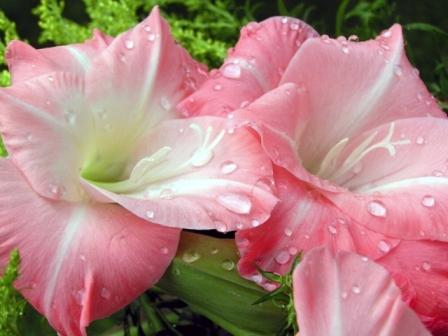 Lilies are luxurious, like candles, standing on the flower beds, overshadowing all the plants around. But - the period of their reign was not long, and here the gardener, gardener, who cultivates this beauty on his flower beds, wonders: lilies have bloomed, what's next? Cut, feed, dig, water - what to do next with faded lilies? Having lost their magnificent color, they immediately lose all their beauty and attractiveness. And I want to remove them faster out of sight so that the picture is not spoiled. And there is no past joy, nothing to admire, a wilted lily is a very unattractive sight, and so nature is not fair.
Lilies are luxurious, like candles, standing on the flower beds, overshadowing all the plants around. But - the period of their reign was not long, and here the gardener, gardener, who cultivates this beauty on his flower beds, wonders: lilies have bloomed, what's next? Cut, feed, dig, water - what to do next with faded lilies? Having lost their magnificent color, they immediately lose all their beauty and attractiveness. And I want to remove them faster out of sight so that the picture is not spoiled. And there is no past joy, nothing to admire, a wilted lily is a very unattractive sight, and so nature is not fair.
When the lily fades
After a period of bright reign, a period of ugly withering begins, and you think how to obscure this former beauty so that the look of the flower garden does not spoil. Therefore, when planting lilies, consider this moment. It’s good when, by the time the lily has bloomed, some annuals have risen, covering a wilted plant with their green mass. After all, it can not be immediately cut! Its seemingly lifeless trunk and drooping leaves give food to the bulb, preparing it for the next season. The more the bulb is saturated with usefulness, the more magnificent and more beautiful the flower will be in the next season.
When the lily blooms, you continue to water and feed it, especially potash-phosphorus complexes will be in the yard. Strengthen watering, and if possible buy a special composition for lilies, and next year beautiful flowers will delight the eye even more. Find out also Do I need to dig daffodils for the winter.
When to prune a lily
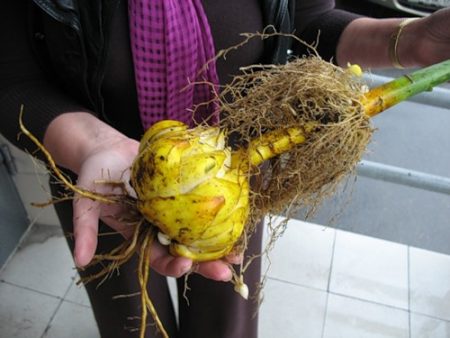
After the lily has blossomed, wait about a month, let it nourish your onion with usefulness, prepare as it should, then you can already cut the plant. Cut so that the formed annual roots do not damage, they will give the bulb additional nutrition, look carefully, they are almost formed on the ground itself. If earlier you want to get rid of a wilted lily, you risk destroying the plant, it will be difficult to take root, and may die at all. As you dig the bulbs, remove the dead parts, dry in the shade, and process with potassium permanganate solution.
Lily Bulb Storage
Further, you can store it either in the basement in a box with sawdust and peat, or in the refrigerator, adding onions on the lower shelf.
Frost-resistant varieties of the type of Asian hybrids winter well even in severe frosts, they are not dug up, they are only covered in winter, protected from too low temperatures, with a layer of compost, in the cold they snow up on them. In the spring, as it begins to warm, gradually the shelter is removed, and the bulbs begin to wake up to life, so that in the summer they will again please us with their magnificent flowering.
Lily transplant
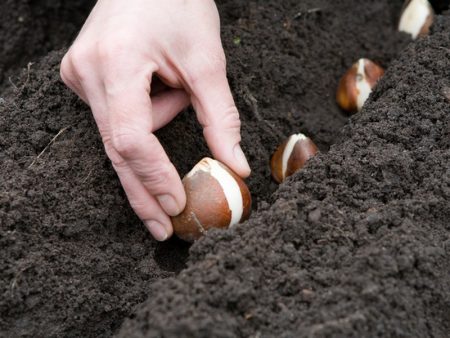
If the lilies have bloomed, and you see that over the summer they have grown too painfully, and you want to plant them, and move them to a new place of residence, August is the time. Trim the stems about 5 cm in height, gently dig the bulbs with a fork, shake the ground and carefully examine the condition of the bulb.
Sting rusty scales, cut long roots to 10 cm, carefully divide large nests into separate bulbs. Then, already clean the onions, lower them for half an hour in a soft pink solution of potassium permanganate, and, without drying, plant them in a new place. Depth - multiply by 3 the height of the bulb, this will be ideal. Pour sand into the hole, spread the roots so that the bottom itself lies on the sand, sprinkle with ash and cover it with earth.
If you grow bushes in the country, you may need information: blackcurrant pests and their control photo.

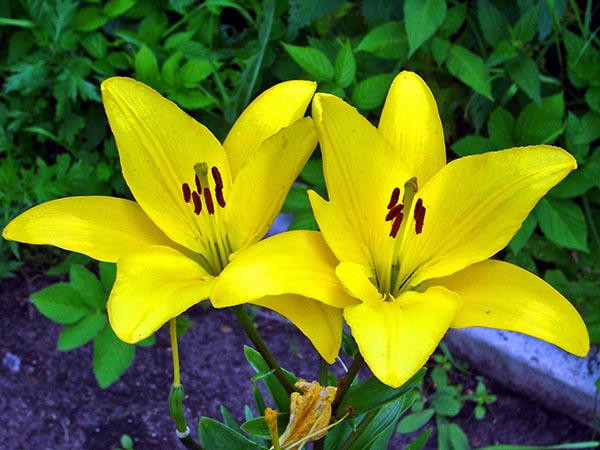
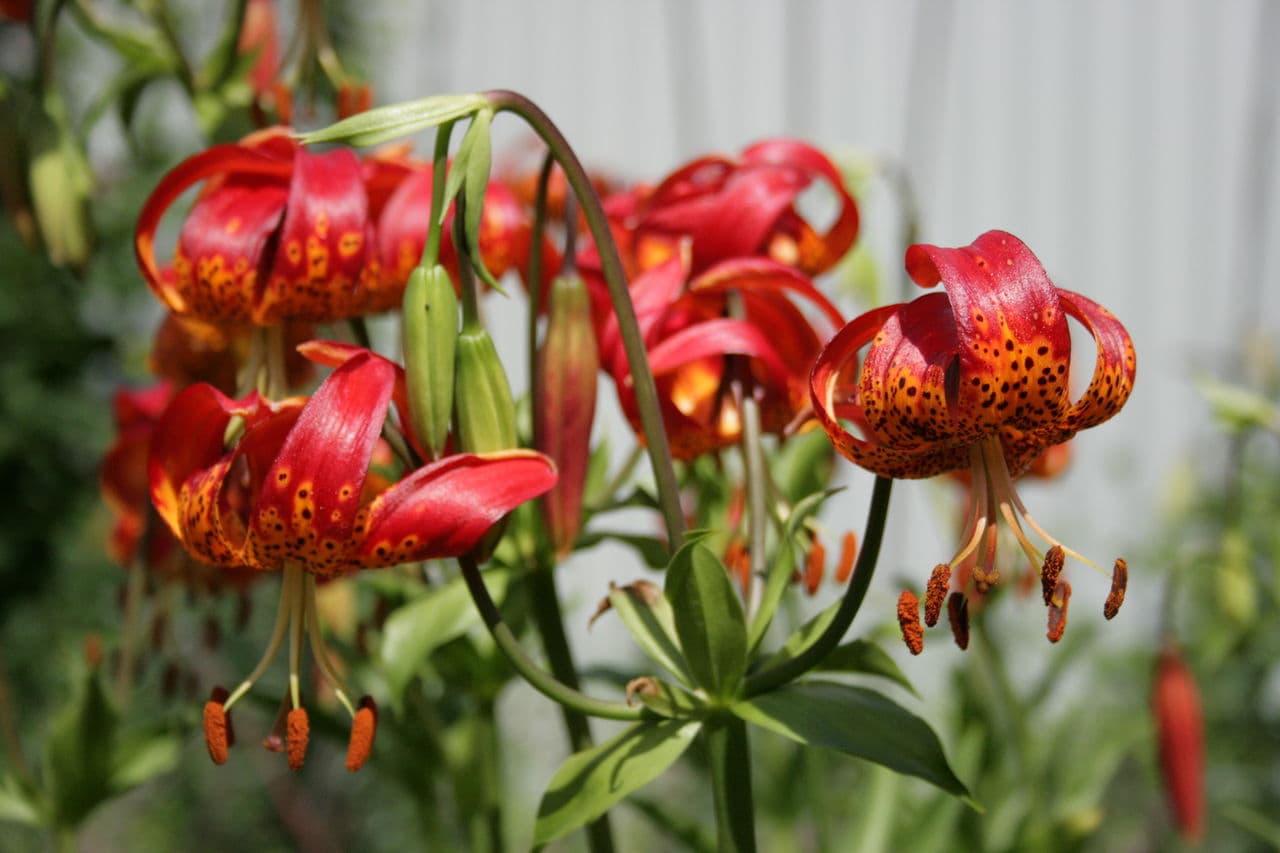

 Lily care after flowering
Lily care after flowering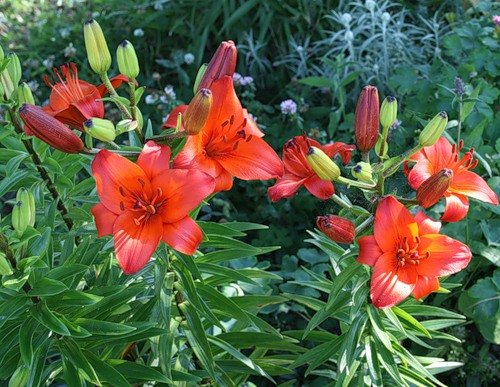 Planting lilies in the open ground and caring for them
Planting lilies in the open ground and caring for them